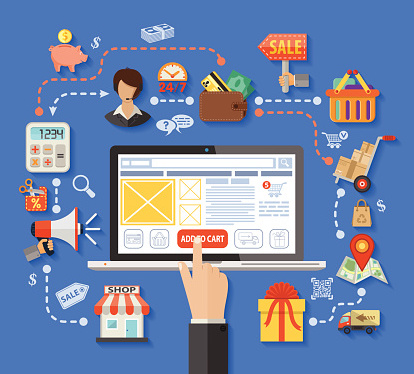
Personalization: How Amazon Got Me to Buy Socks
My alarm went off at 5:00 am, but I had been awake for at least half an hour already. It was July 11, and I had to run 13 miles before work. Training for my first marathon is equal parts exciting and terrifying, and as my workouts have grown in intensity, so to have my needs.
Miles on hard city sidewalks absolutely eat up running shoes. I’m already on my second pair this year, and I’ve eaten more in the past 2 months than I have over the previous 6. My Amazon cart reflects this: running shoes and grocery delivery. What can I say: I’m a renaissance man.
As I walked out into the misty, pre-dawn Chicago twilight, I set the GPS on my phone and saw a notification. It’s July 11. Amazon Prime Day. Knowing that not even Amazon could save me from my training, I closed my phone and set off on my run.

For the record, nobody looks great after running 13 miles. Your legs are jelly, your feet are numb, and your clothes are sweaty enough to be ruined. On July 11, my last pair of running socks succumbed to the rigors of marathon training. Dark times.
Now, it would seem the solution here is simple: go buy more socks, but that’s just not me. I’m that guy who doesn’t buy clothes unless they are destroyed. Function over fashion, that’s how I roll. My wife hates it. My bank account loves it.
My wardrobe changes every Olympics, not every season. Utilitarian clothing items – like socks – are usually on an even longer cycle. That’s why when I say, “my socks didn’t make it,” I mean that they were literally destroyed.
Getting into the office that morning (with a fresh pair of work socks), I gingerly settled into the day with some coffee and email. Atop my inbox was a message from my wife with a link to a ludicrous Prime Day deal on a Dyson vacuum: the exact Dyson we had optimistically registered for (and did not receive) when we got married just before Independence Day.
Socks.
The blister on my heel gave a painful throb, and it took me all of 3 seconds to add 12 pairs of running socks to my cart. In another 15 seconds, the order was in, and my socks were on their way to my doorstep. 18 seconds flat. Not bad for a guy who just ran 13 miles.

My point here is twofold:
- Don’t run marathons. Seriously. This is not fun. I’m just too stubborn to quit.
- Personalization is about simplicity. Simplicity gets people to buy.
Whenever personalization comes up – about every five minutes in today’s retail world – it eventually turns into a conversation about complex techniques and systems that cost money and don’t address the needs of you and your customers.
Personalization is about matching shoppers with exactly what they need the instant they need it. For years, my lovely wife has pined for a Dyson, so Amazon moved it right to the front of her homepage. Amazon knew I was training for a race and replacing my gear (and maybe even that I had ruined my last pair of socks that very morning). Three clicks later, I have socks on the way.
This isn’t to say that there aren’t operational complexities when it comes to executing personalization strategies. After all, Amazon’s slightly creepy ability to know what you need, when you need it is based on years of data analysis.
That ability, though, isn’t born from expensive data programs or flashy graphics. It comes from knowing your customers. It comes from knowing why they shop with you. It comes from understanding how you solve their problems and improve their lives.
Take that knowledge and use it to make every customer’s buying journey as short and simple as possible. That’s how you create a winning, personalized shopping experience, and loyal, returning customers.
Hey, it even got a guy like me to finally buy socks.
